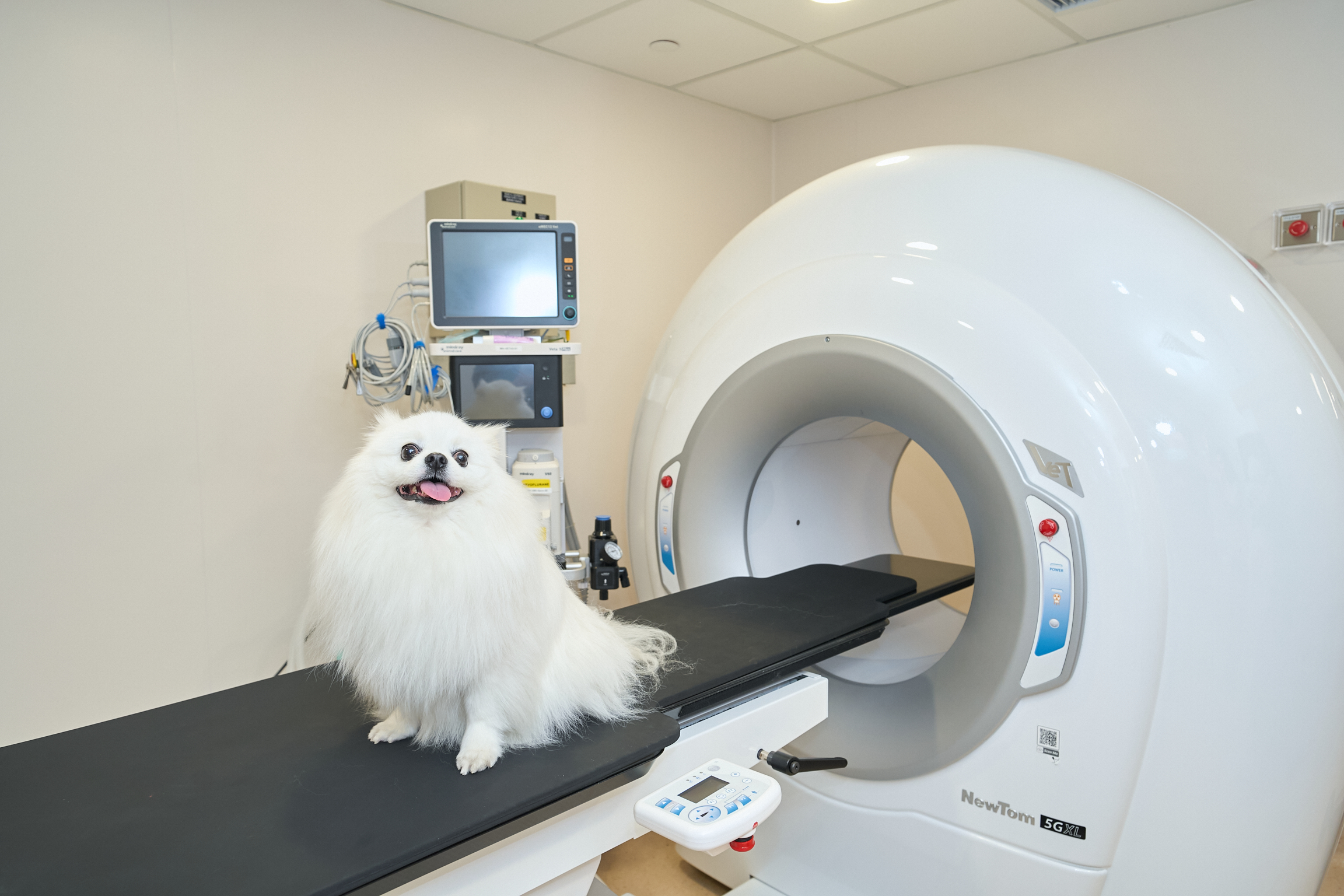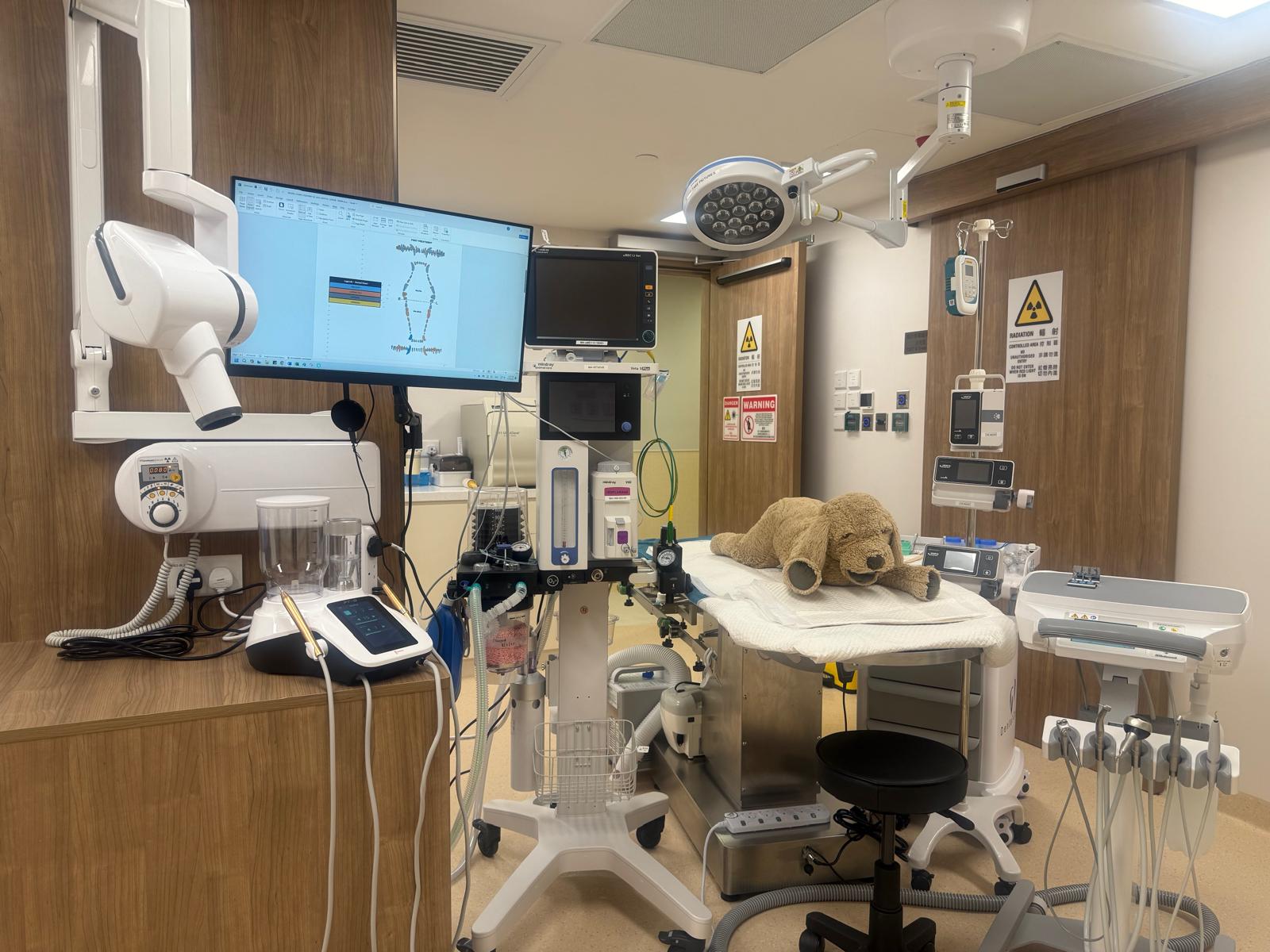Dentistry & Oral Surgery
Our dentistry is featured by cutting-edge technology, including Cone Beam Computed Tomography (CBCT) for advanced imaging of teeth and facial bones, to ensure your animal receives the highest standard of care.
Dentistry & Oral Surgery
Our Dentistry and Oral Surgery Service (DOSS) is directed by the board certified veterinarian Dr. Dea Bonello, a specialist with decades of experience, and is supported by a team of veterinary nurses and technicians who have undergone extensive dentistry training.
Our dentistry is featured by cutting-edge technology, including Cone Beam Computed Tomography (CBCT) for advanced imaging of teeth and facial bones, to ensure your animal receives the highest standard of care.
Our dentistry service works in close collaboration with our anaesthesia department.
We take extra care to our patients during the follow-up periods to ensure treatment success and long-term dental health. The treatment fees can cover up to two revisits.
We provide our clients with diet counselling services, home care instructions, as well as professional dental cleaning services.

Comprehensive Oral Health Assessment and Treatment (COHAT)
Our COHAT package is a standout service. It includes a complete mouth examination and diagnosis. A CBCT scan is involved to provide high–resolution images of the teeth and jaws in less than 3 minutes. The COHAT requires general anaesthesia, which is performed by a board-certified specialist assisted by a team of specialised anaesthesia nurses. The dental plaque and calculus build up on the surface of the teeth is removed with an ultrasonic scaler, with particular attention to the deposit along and below the gum line, and the teeth are then polished with an innovative device called an air-polisher. Air polishing provides full coverage to every corner of the mouth, removing stains and remnants of supra- and subgingival calculus; it is more efficient and safer than other abrasive dental polishing methods, inducing less damage to the enamel. COHAT procedure typically lasts for 30 to 45 minutes, followed by a few hours of inspection before the patient is discharged. All clinical findings and details of the procedure performed are recorded in the dental history. If further action such as teeth extraction is required, a treatment plan and a detailed quotation are provided.
DOSS at HVSEH also offers a wide range of advanced veterinary dentistry and oral surgery services for dogs and cats:
PERIODONTAL SURGERY
Periodontal disease affects almost all dogs and cats aged 5 or older. Apart from pain relief, treating periodontal disease is essential for restoring the health of the gums and supporting structures, which offers significant improvement to the pet’s appetite and overall well-being.
Indications for Periodontal Surgery
- Advanced Periodontal Disease: when non-surgical treatments, such as scaling and root planing, are insufficient to manage the disease.
- Gum Recession: Significant gum loss that exposes tooth roots, leading to sensitivity or mobility.
- Periodontal Abscesses: Infections that cause localised swelling and intense pain, often requiring extraction of teeth to be cured.
- Tooth Mobility: Loose teeth that may need to be stabilised or removed.
Surgical Procedures
- Flap Surgery: involves making an incision through the gum tissue to expose the tooth roots and bone, allowing for thorough cleaning and treatment.
- Bone Grafting: synthetic or biological material is placed to encourage new bone growth and support the teeth affected by periodontal disease.
- Guided Tissue Regeneration (GTR): a barrier membrane is placed over the surgical site to prevent fast-growing soft tissues from interfering with the regeneration of alveolar bone.
- Teeth Splinting: is used to stabilise loose teeth by connecting the affected tooth to adjacent healthy teeth. This procedure helps prevent further mobility and supports healing, allowing the periodontal structures to recover effectively.
- Tooth Extraction: removal of severely affected teeth that cannot be saved, minimising trauma to surrounding tissues, always followed by closure of the extraction site.
Postoperative Care
- Medications are prescribed to manage pain and inflammation.
- Antibiotics may be necessary pre- or postoperatively to treat the infection and minimise the risk of complications.
- Soft foods may be recommended during the initial recovery phase.
- Follow-Up Visits: Multiple revisits are essential to monitor healing.
- Oral hygiene at home is mandatory to ensure the success of the surge
RESTORATIVE DENTISTRY:
- Filling of cavities and repair of teeth lesions
ENDODONTICS
- Root canal treatment
ORTHODONTICS
- Correction of misaligned teeth
PROSTHODONTICS
- Crowns and implants
MAXILLOFACIAL SURGERY:
- Repair of jaw fractures and oral soft tissue trauma
ONCOLOGY:
- Staging and treatment of oral tumours
PAEDIATRIC DENTISTRY
First Dental Check-Up
- The first dental check-up is typically recommended when the puppy or the kitten is about 4 months old, coinciding with the eruption of adult teeth.
- The purpose of the visit is to assess the teeth early, with special attention to their occlusion. Class III malocclusion (underbite) can only be corrected at this age. Also, patients presenting with class II malocclusion (overbite) could need some treatment at an early stage to resolve the occlusal trauma caused by the mandibular canines.
- Animal owners receive guidance on proper dental care, including daily cleaning, dental treats, and diet suggestions.
Extraction of Deciduous Teeth
- Extraction is necessary if a baby tooth is significantly diseased, or when a baby teeth do not fall out as the adult teeth erupt which can lead to overcrowding and alignment issues.
Procedure
- General anaesthesia is usually administered to ensure the pet is comfortable and pain-free during the extraction.
- Gentle Technique: our board-certified specialist performs the extractions, using instruments approved in paediatric clinics and animal-friendly techniques to minimize trauma to the surrounding tissues and to avoid injuring the permanent teeth.
Aftercare
- Owners receive detailed aftercare instructions, including pain management and dietary recommendations.
- Follow-Up Care: one revisit is included in the price of the procedure. Nevertheless, regular dental check-ups are essential to monitor healing and ensure healthy oral development.
DENTISTRY FOR SENIOR DOGS AND CATS
Taking extra care of senior patients undergoing surgical procedures is essential due to their unique health needs. Here are some key practices typically implemented in our hospital to ensure their safety and comfort:
Preoperative Assessment
- Comprehensive Evaluations: Senior patients undergo thorough preoperative assessments to evaluate their overall health, including existing medical conditions, medications, and functional status.
- Multidisciplinary Approach: Involvement of various specialists (e.g., cardiologist, anaesthesiologist) to create a tailored surgical plan.
Personalised Care Plans
- Individualised Protocols: Care plans are customised based on the patient’s medical history and surgical needs.
- Risk Mitigation Strategies: Identification of potential complications and proactive measures to address them.
Enhanced Communication
- Detailed Discussions: Care teams engage in clear and compassionate communication with owners and their families about the treatment procedure, risks, and expectations.
- Informed Consent: Ensuring that owners fully understand the consent process and are comfortable with their decisions.
Specialized Anesthesia Care
- Geriatric Anesthesia: Anesthesia techniques are adjusted to accommodate the sensitivities of senior patients, minimising risks and side effects.
- Close Monitoring: Enhanced monitoring during surgery to track vital signs and respond quickly to any changes in condition.
- Team Coordination: Surgeons, anaesthesiologists, and nurses work together closely to ensure a smooth operation.
Postoperative Care
- Pain Management: Focus on effective pain management while considering the unique responses of older patients to medications.
- Rehabilitation Support: to promote recovery and reduce complications.



